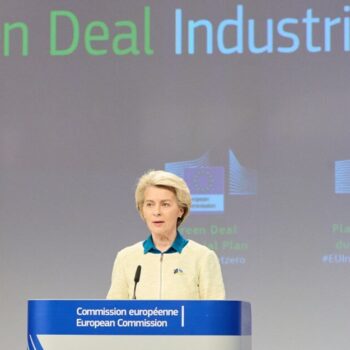It's time to return Europe to competitiveness through increased energy productivity.
Back in May this year, the wise folks at DG ECFIN (Economic and Financial Affairs) warned again of the fragile state of the economic recovery in Europe. They noted that growth has not picked up enough to deliver a marked improvement in job creation and that international developments add to existing uncertainty about the EU’s economic prospects. These include volatility in commodity and energy prices; exchange rates and financial markets; persistence of geopolitical tensions in the EU neighbourhood; and reduced economic activity in emerging economies. The EU’s response to these ongoing challenges – notably the “Investment Plan for Europe” – is the right one. The focus on driving investment in a very practical way in the short term – through the European Strategic Fund for Investment (ESFI) and technical assistance for project developers – is important. But equally important will be the longer term reforms the Commission enacts (the second piece to the Investment Plan) to deepen the single market and sustain growth in the longer term through innovation and improved efficiencies across capital, energy and digital markets in the EU.
This is a smart way to drive a return to competitiveness and growth. And yet there is currently a yawning and obvious gap in how the Plan is being implemented. In focusing on facilitating investment in traditional big infrastructure such as gas pipelines, fibre optic cable and airports, we will miss the opportunity deliver the equally important, smaller and more widely distributed energy investments that could play such a significant role in driving growth. This includes investment in increased levels of energy efficiency and smarter management of energy demand that can deliver considerable competiveness gains through increasing the energy productivity of Europe. Granted, some interesting projects on energy efficiency are coming through – including support for industrial energy efficiency in Italy, a new regions-led energy efficiency financing vehicle in France and smart meter roll out in the UK. However, this will have a minimal impact on the volume of projects coming through for financing overall. There is an estimated gap of up to €100bn per year to 2020 to meet the EU’s 2020 goal of increasing the energy efficiency of the EU economy by 20% – a fivefold increase in current investment levels is needed to close the gap in the buildings sector alone.
A new paper from E3G argues this gap cannot be closed simply through ‘more of the same’ energy efficiency policy-making. Instead European Commission officials must look wider and more systematically at how energy productivity increases can be enabled through wider structural reforms that sit more traditionally within economic policies, financial regulation, energy market reforms and institutional arrangements.


